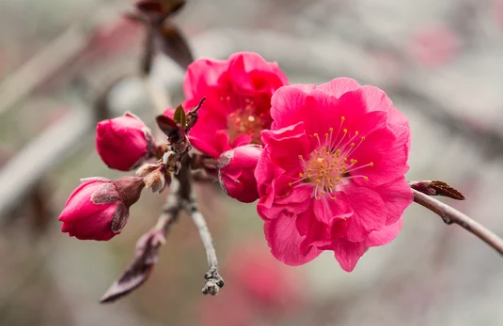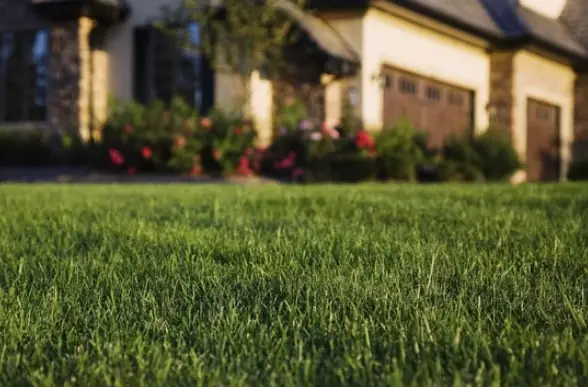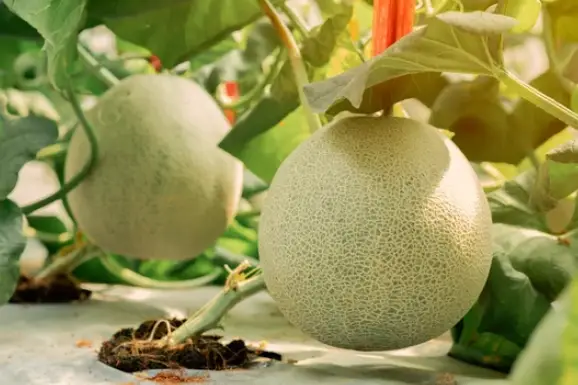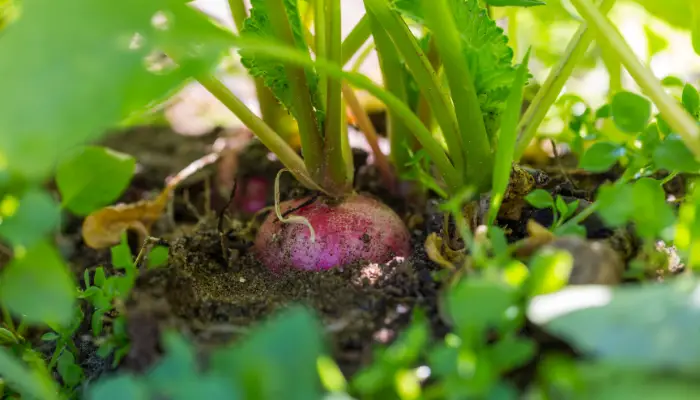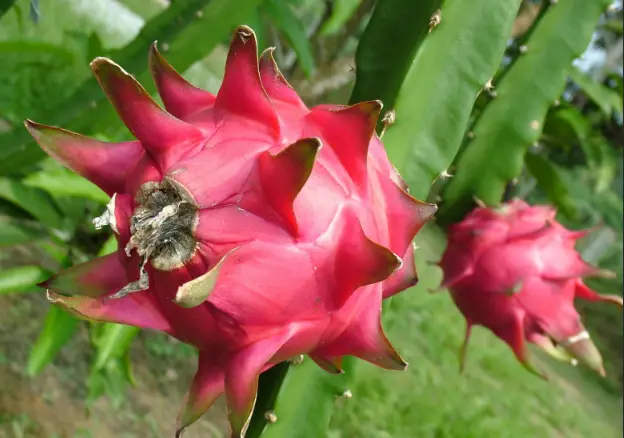Red Flowering Peach Tree: A Beautiful Addition to Your Garden
Red flowering peach trees are a popular choice for gardeners and homeowners looking to add a splash of color to their landscape. These trees produce beautiful, vibrant flowers that range in color from deep red to pink. While they are often grown for their ornamental value, some varieties of red flowering peach trees also produce fruit that can be harvested and enjoyed.
When selecting a red flowering peach tree, it is important to consider the specific variety and its growing requirements. Some varieties are better suited for certain climates and soil types, while others may require more maintenance or pruning. It is also important to choose a location that receives plenty of sunlight and has well-draining soil.
Overall, red flowering peach trees can be a stunning addition to any landscape. With the right care and attention, these trees can thrive and provide years of enjoyment for gardeners and homeowners alike.
Red Flowering Peach Tree Overview
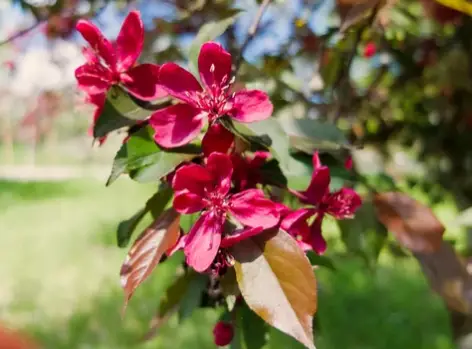
Red flowering peach trees, also known as Prunus Persica, are deciduous trees that are popular for their beautiful, showy, and fragrant blooms. They are native to China and have been cultivated for centuries for their ornamental value. These trees are a great addition to any garden or landscape, adding color and beauty to the surroundings.
Red flowering peach trees are small to medium-sized trees that grow up to 20 feet tall and 20 feet wide. They have a round shape and a dense canopy that provides ample shade during the summer months. The leaves are dark green and glossy, and they turn yellow in the fall before dropping off.
The most striking feature of the red flowering peach tree is its flowers. The tree produces masses of clustered double reddish-pink blossoms in early spring, even before the leaves have emerged. The flowers are long-lasting and showy, making them a popular choice for cut flower arrangements.
Red flowering peach trees are relatively easy to grow and maintain. They prefer full sun and well-drained soil, but they can tolerate a wide range of soil types and pH levels. They are also tolerant of drought and heat, making them a great choice for hot and dry climates.
In terms of pests and diseases, red flowering peach trees are relatively resistant to most common pests and diseases. However, they can be susceptible to peach leaf curl, which is a fungal disease that causes the leaves to curl and turn yellow. This can be prevented by spraying the tree with a fungicide in the fall and again in the spring.
Overall, red flowering peach trees are a great choice for anyone looking to add color and beauty to their garden or landscape. They are easy to grow and maintain, and they provide year-round interest with their beautiful blooms and attractive foliage.
Origins and History
The Prunus Persica, commonly known as the peach tree, is native to China and was brought to the Middle East through trade routes that extend to Turkey and Iran (Persia) fig and plum. The peach tree was then introduced to Europe by the Persians and was cultivated by the Greeks and Romans. The Ancient Romans referred to the peach as malum persicum, which means “Persian apple” in Latin Wikipedia.
The cultivation of peach trees in the United States dates back to the late 16th century. In December of 1795, Thomas Jefferson planted 1,151 peach trees at Monticello after he had experimented with planting the “black plumb peach of Georgia,” also known as the Indian Blood Cling Peach, in 1807 Pioneer Thinking. This peach wonder had been planted throughout the State of Georgia by the Indians and was a dark-red velvety color with tiger-like striping.
Today, peach trees are widely grown in many regions of the world, and there are over 2,000 varieties of peaches cultivated worldwide Britannica. The Early Double Red Flowering Peach is one of the many varieties of peach trees that are popular among gardeners for their beautiful and vibrant flowers.
Physical Characteristics

The red flowering peach tree, also known as Prunus persica, is a deciduous tree that typically grows to a height of 20 to 25 feet and a spread of 15 to 20 feet. It has a rounded shape and a moderate growth rate. The tree’s bark is grayish-brown and smooth when young, but it becomes rough and scaly as it ages.
The leaves of the red flowering peach tree are lance-shaped and serrated, with a glossy green surface. They are approximately 2 to 4 inches long and 1 inch wide. In the fall, the leaves turn yellow, orange, or red before dropping from the tree.
The tree produces showy, fragrant flowers in early spring before the leaves emerge. The flowers are typically pink or red, but some varieties may have white or pale pink blooms. The flowers are borne singly or in clusters of two to five, and each flower has five petals.
The fruit of the red flowering peach tree is a drupe, which means it has a fleshy outer layer surrounding a hard inner pit. The fruit is typically 2 to 3 inches in diameter and has a fuzzy skin that can be red, yellow, or white. The flesh of the fruit is juicy and sweet, with a slightly tart flavor. The fruit ripens in mid to late summer, depending on the variety.
Overall, the red flowering peach tree is a beautiful and ornamental tree that can add color and interest to any landscape. Its attractive flowers and fruit make it a popular choice for gardeners and landscapers alike.
Growth and Development

Planting and Care
Red flowering peach trees are relatively easy to grow and care for. They prefer well-draining soil with a pH of 6.0 to 7.0 and full sun exposure. When planting, dig a hole twice the size of the root ball and as deep as the container. Make sure the tree is planted at the same depth as it was in the container. Water the tree deeply after planting and mulch around the root zone to seal in moisture. Stake the tree immediately after planting to prevent it from leaning.
To care for a red flowering peach tree, water it deeply once a week during the growing season. Fertilize the tree in early spring with a balanced fertilizer. Prune the tree in late winter or early spring before new growth appears. Remove any dead, diseased, or damaged wood and thin out the center of the tree to improve air circulation and sunlight penetration.
Seasonal Changes
Red flowering peach trees go through several stages of growth and development throughout the year. In early spring, the tree produces beautiful pink or red blossoms that last for about two weeks. After the flowers fade, the tree produces leaves and begins to grow. In summer, the tree produces fruit that is ready to harvest in late summer or early fall.
In autumn, the leaves of the red flowering peach tree turn yellow or orange before falling off in preparation for winter. During the winter, the tree goes dormant and does not produce any new growth until the following spring. It is important to protect the tree from frost and cold temperatures during the winter months to prevent damage to the branches and buds.
Overall, with proper planting and care, red flowering peach trees can provide beautiful blooms in the spring and delicious fruit in the summer while enhancing the aesthetic appeal of any garden or landscape.
Significance in Different Cultures
Red flowering peach trees have been revered in various cultures for centuries. Here are some examples:
- Chinese Culture: In Chinese culture, the peach tree is a symbol of longevity, good fortune, and prosperity. The peach blossom is also associated with love and romance. According to Chinese mythology, the peach tree is a sacred plant that can grant immortality. The peach tree is also used in Chinese medicine to treat various ailments such as coughs, constipation, and inflammation.
- Greek Mythology: In Greek mythology, the peach tree was associated with the goddess Aphrodite, who was the goddess of love, beauty, and fertility. According to legend, the peach tree was created by Aphrodite to symbolize her love for Adonis, the god of beauty and desire.
- Victorian Era: During the Victorian era, the peach blossom was a popular symbol of charm and generosity. It was often given as a gift to express admiration and affection.
- Japanese Culture: In Japanese culture, the peach tree is a symbol of good luck, longevity, and happiness. The peach blossom is also associated with spring and renewal. In Japanese folklore, the peach tree is believed to have magical powers that can ward off evil spirits and bring good fortune.
- Native American Culture: In Native American culture, the peach tree is a symbol of wisdom, strength, and endurance. The peach tree was used by Native Americans for its medicinal properties to treat various ailments such as fever, coughs, and diarrhea.
Overall, the red flowering peach tree has played a significant role in various cultures throughout history. Its beauty, medicinal properties, and symbolism have made it a revered plant in many parts of the world.
Potential Problems
When it comes to red flowering peach trees, there are a few potential problems to be aware of. Here are some of the most common issues:
Pests
Red flowering peach trees can be susceptible to a variety of pests, including aphids, mites, and scale insects. These pests can cause damage to the leaves, fruit, and branches of the tree. If left untreated, they can weaken the tree and make it more vulnerable to other problems.
To prevent pest infestations, it’s essential to keep the tree healthy and well-maintained. Regular pruning, fertilization, and watering can help to keep the tree strong and healthy. If you do notice signs of pests, such as curled or discolored leaves, it’s important to take action right away. There are a variety of organic and chemical treatments available to help control pest infestations.
Diseases
Like all plants, red flowering peach trees can be susceptible to a variety of diseases. One of the most common diseases that affect peach trees is peach leaf curl. This fungal disease causes the leaves to curl and become distorted, and can also cause the fruit to become discolored and misshapen.
To prevent peach leaf curl and other diseases, it’s important to keep the tree well-maintained and healthy. This includes regular pruning, fertilization, and watering. If you do notice signs of disease, such as curled or discolored leaves, it’s important to take action right away. There are a variety of organic and chemical treatments available to help control diseases.
Overall, by keeping your red flowering peach tree well-maintained and healthy, you can help to prevent and control potential problems. Regular monitoring and prompt action can help to ensure that your tree stays strong and healthy for years to come.
Conservation and Sustainability
The red flowering peach tree is a popular ornamental tree due to its stunning display of double red flowers in early spring. However, like many ornamental trees, its cultivation can have negative impacts on the environment if not managed sustainably.
One of the biggest concerns with the cultivation of red flowering peach trees is the use of pesticides and fertilizers. These chemicals can leach into the soil and nearby water sources, causing harm to wildlife and ecosystems. To minimize these impacts, it is important to use natural and organic alternatives to chemical pesticides and fertilizers.
Another important factor to consider when cultivating red flowering peach trees is water usage. While these trees do require regular watering, overwatering can lead to water waste and potential harm to nearby ecosystems. To conserve water, it is recommended to use drip irrigation systems and to water the trees during the early morning or late evening when evaporation rates are lower.
Finally, it is important to consider the impact of the red flowering peach tree on local biodiversity. While these trees are beautiful, they are not native to many areas and can potentially outcompete native species for resources. To minimize this impact, it is recommended to plant red flowering peach trees in areas where they will not negatively impact local ecosystems.
By cultivating red flowering peach trees sustainably, it is possible to enjoy their beauty while minimizing their negative impacts on the environment.
Commercial Uses

The Red Flowering Peach tree is primarily grown for ornamental purposes due to its beautiful and showy flowers. However, it also has some commercial uses.
One of the commercial uses of the Red Flowering Peach tree is in the production of peach fruits. While the tree is not the most common variety grown for its fruit, it still produces edible peaches that are enjoyed by many. The fruit is typically smaller in size than other peach varieties and has a slightly different taste.
Another commercial use of the Red Flowering Peach tree is in the production of peach blossom honey. The tree produces large quantities of nectar-rich flowers that are highly attractive to bees. The bees collect nectar from the flowers and use it to produce honey. Peach blossom honey has a unique flavor profile and is highly sought after by many consumers.
The Red Flowering Peach tree is also used in landscaping and as a decorative plant in public spaces such as parks and gardens. Its vibrant red flowers add a splash of color to any landscape and make it a popular choice for ornamental purposes.
Overall, while the Red Flowering Peach tree is not primarily grown for commercial purposes, it still has a few uses in the market. Its beauty and unique qualities make it a valuable addition to any garden or landscape.
Conclusion
In conclusion, growing a red flowering peach tree can be a beautiful addition to any garden or landscape. These trees are easy to care for and can thrive in a variety of climates. They are also quite versatile, as they can be used for both ornamental and edible purposes.
When choosing a red flowering peach tree, it is important to consider factors such as the tree’s size, bloom time, and fruiting capabilities. Some popular varieties include the Early Double Red and Red Baron.
To ensure the tree’s health and longevity, proper planting and maintenance are key. This includes planting in well-draining soil, providing adequate water and nutrients, and pruning as needed.
Overall, a red flowering peach tree can provide stunning blooms and delicious fruit for years to come. With the right care and attention, it can be a true highlight of any outdoor space.
Frequently Asked Questions
What is a Dwarf Red Flowering Peach Tree?
A Dwarf Red Flowering Peach Tree is a small, compact tree that produces beautiful red flowers in the spring. It is a great option for those who have limited space in their garden or want to grow a tree in a container. Dwarf Red Flowering Peach Trees typically grow to around 6-8 feet tall and wide.
What is a Double Red Flowering Peach Tree?
A Double Red Flowering Peach Tree is a tree that produces double the amount of flowers as a regular flowering peach tree. These trees produce beautiful red flowers in the spring and are a great addition to any garden. They typically grow to around 20 feet tall and wide.
Can Flowering Peaches Produce Fruit?
Yes, some flowering peach trees can produce fruit. However, not all of them do. If you want a tree that produces both beautiful flowers and delicious fruit, you should look for a fruiting peach tree.
Are Redskin Peach Trees Self-Pollinating?
No, Redskin Peach Trees are not self-pollinating. This means that you will need to plant another peach tree nearby to ensure that your Redskin Peach Tree produces fruit. You should choose another peach tree that blooms at the same time as your Redskin Peach Tree for best results.
What is the Zone for Red Flowering Peach Trees?
Red Flowering Peach Trees typically grow best in USDA Hardiness Zones 5-8. However, some varieties can grow in Zones 4-9. Be sure to check the specific requirements for the variety you are interested in before planting.
Where Can I Find Red Flowering Peach Trees for Sale?
You can find Red Flowering Peach Trees for sale at many nurseries and garden centers. You can also find them for sale online at various retailers. Be sure to choose a reputable seller and check the reviews before making a purchase.

